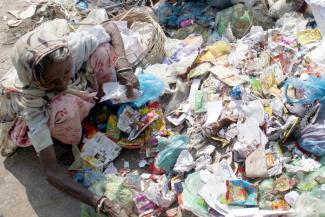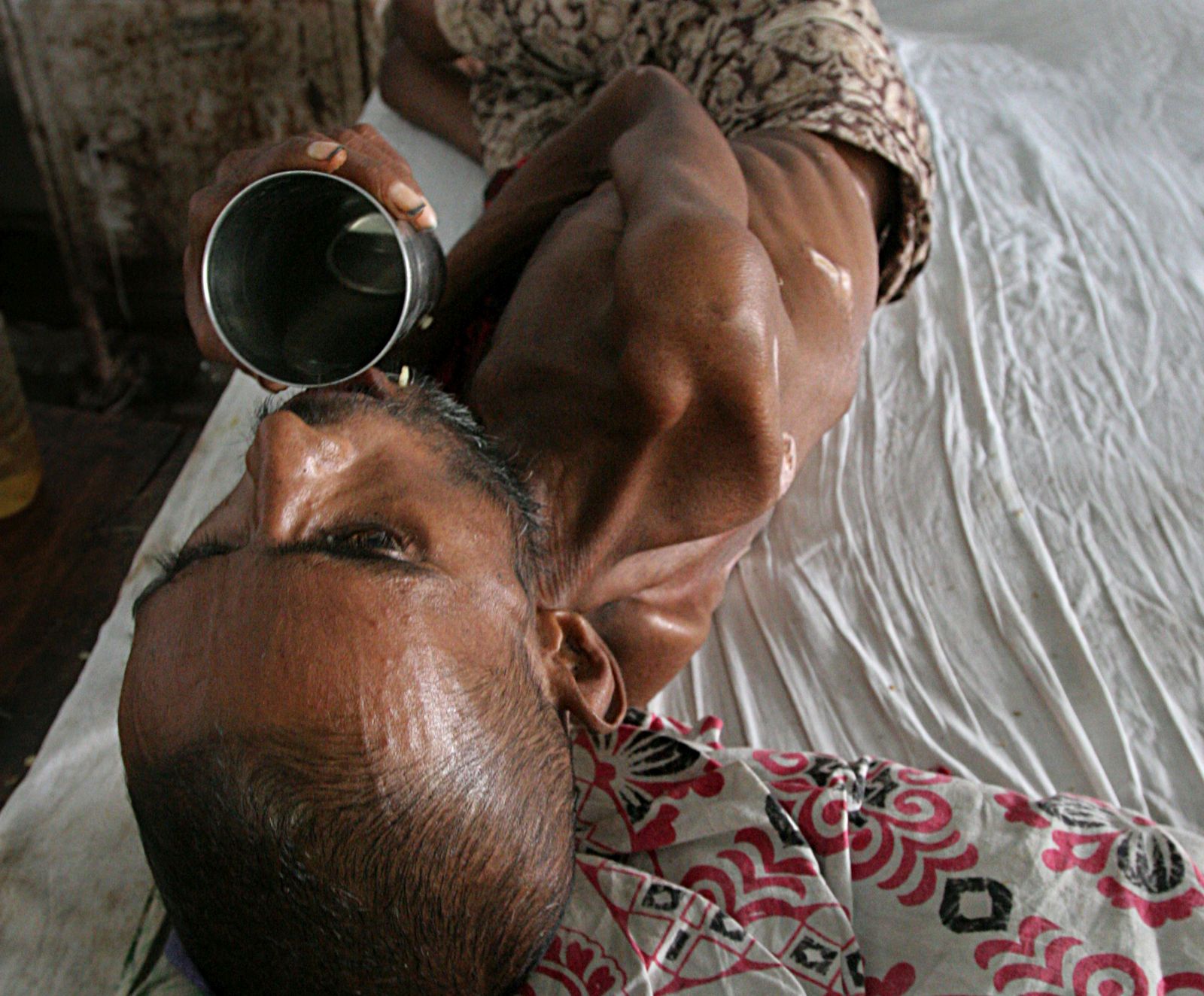Health hazards
In Pakistan, toxins put the poor particularly at risk

The South Asian country faces numerous adverse impacts of chemical pollution as its industrial activity and consumer market surge. Negative impacts affect air, water and soil. Especially the localities where poor people live are exposed.
Sometimes the impacts are in plain sight. An accident killed at least 14 people in Karachi, Pakistan’s most populous city, in February 2020. Dozens who survived were admitted to local hospitals. Because of the chemically polluted air, they suffered chest pain, burning eyes and breathing difficulties. The neighbourhood concerned was Keamari, which is close to the South Asian nation’s major commercial port.
Chemicals-related health hazards are not always that obvious. Those who become sick because of urban air pollution, for example, cannot trace their suffering back to a single explosion or event, even though it is well understood that urban air contains various toxins. According to the World Health Organization (WHO), they cause 22,000 premature adult deaths every year in Pakistan. In a country of over 220 million people, this UN agency reckons that there are an annual 40 million cases of acute respiratory infections.
Sources of chemical pollution
The ever-increasing number of motor vehicles is part of the problem. According to the World Bank, it rose more than fivefold to 10.6 million in the two decades up to 2012, and it has kept growing since. Harmful farming practices (see my comment in Debate section of D+C/E+Z e-Paper 2021/01) and coal-fired power plants matter as well. Industrial air pollution, including from small-scale manufacturing adds to the problems, and so does the burning of plastic waste. Government authorities are overburdened, unable – and perhaps also unwilling – to keep track of all pollution sources.
Water and soils are all too contaminated as well, given that plastic waste, industrial effluents and landfills are not monitored properly. The use of pesticides and chemical fertilisers in agriculture is worrisome too.
While every person in Pakistan is exposed to the related risks to some extent, it is safe to say that the poor suffer in particular. More than half of major cities’ people live in informal settlements. The infrastructure of the slum areas is inadequate. Typically, these localities have no underground sewerage system. Municipal services tend to ignore them. Often they are close to polluting industries. Cooking fires, locally generated garbage and insufficient sanitation add to the problems.
Microparticles and other residues of plastic waste contaminate fresh ground water in many places (see Sabine Balk in Focus Section of D+C/E+Z 2021/03). Other chemicals, stemming from paints, for example, can be harmful too.
Plastic waste
At the same time, plastic garbage – including bags, bottles and packaging – seems to be omnipresent. Large items clog open drains and block underground sewerage lines. On landfills, such waste is often burned. The smoke inevitable contains a broad mix of different poisonous substances. Such fires occur in other places too. Sometimes, they result from accidents, but some are started on purpose. In rare cases, poor people do that if they cannot afford other fuels. One quarter of Pakistan’s people live below the poverty line.
The Pakistan chapter of the World Wide Fund for Nature (WWF) reckons that Pakistanis use an annual 55 billion plastic bags. The international non-governmental organisation expects the number to rise by 15 % per year. So far, even the urban areas have no formal system for targeted collection of plastic waste and recycling. Scavengers pick plastic waste from garbage heaps and sell usable items on the scrap market. The rest is either burned or permanently litters the environment.
According to the national government’s Economic Survey of Pakistan 2019–2020, most of the plastic items that consumers use are discarded permanently within a year of being manufactured. Related pollution was said to have hazardous impacts on oceans, human life, wild life and the overall environment. The national and provincial governments have enacted specific laws and rules, but effective implementation is lacking.
On the upside, behavioural change is seen in upscale markets, where well-to-do consumers have begun to prefer biodegradable bags to plastic items. Plastic bags are cheaper, however, so they stay prevalent in poor neighbourhoods.
Polluting industries
Industrial pollution is a huge problem. There are different kinds of industrial zones, with large, medium and small-scale production sites. Large facilities are formally registered, but the small-scale sector is largely beyond government supervision. Either way, many industrial processes involve a multitude of different chemicals, many of which are dangerous. Smoke and effluents tend to be contaminated accordingly, but remain unchecked by government agencies.
Nutrient-rich municipal waste-water, moreover, is used for agricultural purposes, in particular for vegetable farming on the outskirts of cities. What neither farmers nor consumers see, is that the sewage is contaminated with heavy metals and other toxic substances. Healthy looking vegetables may therefore actually be a health hazard. Moreover, waste-water farming often contaminates groundwater.
According to the law, industries must use air filters and effluent treatment plants. In theory, there are stiff penalties. In practice, however, enforcement is lacking, and so far, government agencies have not shown much concern. In 2019, a group of environmental researchers (Mahmood, 2019) stated: “No serious effort has been put forth by any agency in Pakistan to characterise the exact nature and concentration of contaminants found in wastewaters originating from various industrial zones.”
Many small tanning units continue to work in eastern Punjab’s industrial city of Sialkot without any sewage treatment. Most of these are situated in low-income localities. The situation is similar in Faisalabad, the country’s textile-industry hub. Many production facilities operate in residential areas, but without treatment plants.
The SDG challenge
To some extent, official neglect of chemical pollution may be related to the fact that a biological kind of pollution is even more prevalent. According to researchers (Ali et al, 2017), 80 % of Pakistanis depend on unsafe drinking water because of faecal pollution, which results from inadequate sanitation. Pakistan has made international commitments, including in the context of the Sustainable Development Goals (SDGs). Sanitation and clean drinking water are on the agenda – plus much more. To get there, governments must muster more political will than they have done in the past and make their agencies work more effectively.
References
Mahmood, Q., et al, 2019: Chemical pollutants from an industrial estate in Pakistan. In: Applied Water Science 9:47.
https://www.researchgate.net/publication/331854658_Chemical_pollutants_from_an_industrial_estate_in_Pakistan_a_threat_to_environmental_sustainability
Shafaqat, A., et al, 2017: Drinking water quality status and contamination in Pakistan. In: BioMed Research International, 8:14.
https://www.hindawi.com/journals/bmri/2017/7908183/#introduction
Imran Mukhtar is a journalist based in Islamabad.
imranmukhtar@live.com
Twitter: @imranmukhtar












